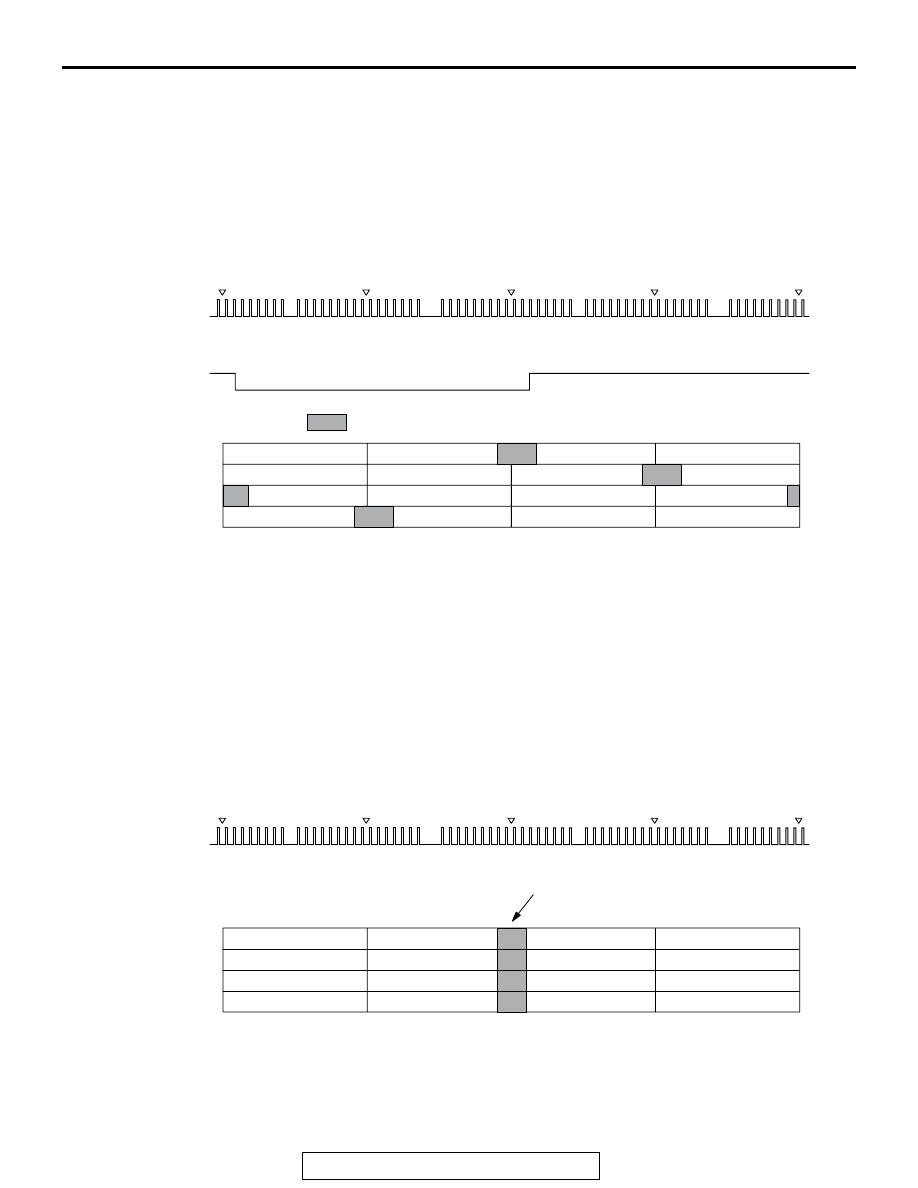Mitsubishi Evolution X. Manual - part 126

FUEL INJECTION CONTROL
TSB Revision
MULTIPORT FUEL SYSTEM (MFI)
13A-33
1. INJECTOR ACTUATION (FUEL INJECTION)
TIMING
Injector drive time in case of multiport fuel injection (MFI) is
controlled as follows according to driving conditions.
Fuel Injection During Cranking and Normal Operation
Fuel injection to each cylinder is done by driving the injector at
optimum timing while it is in exhaust process based on the
crankshaft position sensor signal. ECM compares the crank-
shaft position sensor output pulse signal and intake camshaft
position sensor output pulse signal to identify the cylinder.
Using this as a base, it performs sequential injection in the
sequence of cylinders 1, 3, 4, 2.
Additional Fuel Injection During Acceleration
In addition to the synchronizing fuel injection with crankshaft
position sensor signal during acceleration, the volume of fuel is
injected according to the extent of the acceleration.
AK703691
<No. 2 TDC>
H
L
H
L
<No. 1 TDC>
<No. 3 TDC>
<No. 4 TDC>
<No. 2 TDC>
AC
Crankshaft
position
sensor
signal
Intake
camshaft
position
sensor
signal
Cylinder stroke
No. 1 cylinder
No. 2 cylinder
No. 3 cylinder
No. 4 cylinder
Combustion
Intake
Exhaust
Combustion
Exhaust
Compression
: Fuel injection
Intake
Exhaust
Compression
Combustion
Intake
Compression
Intake
Exhaust
Combustion
Compression
AK703786
<No. 2 TDC>
H
L
<No. 1 TDC>
<No. 3 TDC>
<No. 4 TDC>
<No. 2 TDC>
AC
Crankshaft
position
sensor
signal
Cylinder stroke
No. 1 cylinder
No. 2 cylinder
No. 3 cylinder
No. 4 cylinder
Combustion
Intake
Exhaust
Combustion
Exhaust
Increase injection for acceleration
Compression
Intake
Exhaust
Compression
Combustion
Intake
Compression
Intake
Exhaust
Combustion
Compression